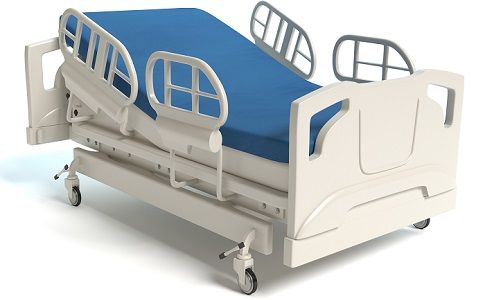Article
Hospital Room Floors Often Contaminated with Pathogens
Author(s):
Key Takeaways
- Hospital floors are significant reservoirs for pathogens like C. difficile, MRSA, and VRE, often overlooked in disinfection protocols.
- Isolation rooms show higher contamination rates of MRSA and VRE on floors compared to non-isolation rooms, despite similar C. difficile levels.
Patients’ hospital room floors are frequently contaminated with pathogens.

Despite routine cleaning, patients’ hospital room floors are frequently contaminated with pathogens, which can easily transfer onto hands.
These pathogens, including Clostridium difficile (C. difficile), methicillin-resistant Staphylococcus aureus (MRSA), and vancomycin-resistant enterococci (VRE) demonstrate that hospital room floors can be an underappreciated source for pathogen dissemination.
Researchers from Case Western Reserve University examined the frequency of contamination of isolation room floors with C. difficile, MRSA, and VRE as well as the potential for transfer of these pathogens from floors to hands. In fact, a recent study showed that objects often touched by hands, such as shoes and patients’ non-slip socks, were frequently contaminated with MRSA and VRE.
The investigators gathered 318 floor site cultures from 159 patient rooms (two sites per room) from five hospitals across the Cleveland area. These rooms were both C. difficile isolation rooms as well as non-C. difficile infected rooms. The researchers collected other cultures from hands — gloved hands from the isolation rooms and bare hands from the non isolated rooms – and high touch surfaces such as clothing, call buttons, medical devices, linens, and medical supplies.
C. difficile was the most commonly reported pathogen from both types of rooms. Both MRSA and VRE were seen significantly more often from floors in C. difficile isolation rooms than in non-isolation rooms, despite similar levels of C. difficile in isolation compared to non-isolation rooms. Rooms cultured after the patient was discharged had less MRSA and VRE contamination compared to rooms cultured during the patient stay, but this was not true for C. difficile.
The researchers reported that each hospital had similar contamination rates from room and bathroom floor sites.
There was one or more high touch object in contact with the floor in 41% of the rooms surveyed. These objects varied, but included personal items, such as patients’ clothing, canes, or cell phone chargers; medical devices or supplies, such as pulse oximeters, call button, heating pad, urinal, blood pressure cuff, wash basin, and heel protector; or bed linens, pillows, and towels.
The researchers cultured 31 of these high touch objects present on floors, touched by bare hands or gloved hands, and they determined that MRSA, VRE and C. difficile were found on 18%, 6%, and 3%, respectively.
The researchers acknowledged that many disinfection plans often ignore surfaces such as floors because they are not frequently touched. However, they added that these surfaces need greater consideration due to the frequent touching of objects that may come into contact with the floor. The study authors stressed the importance for this, especially for C. difficile spores on floors in particular, as evidenced by spores present in both isolation and non-isolation rooms.
“Because floors are frequently contaminated, it would be reasonable to educate health care personnel and patients that they should avoid placing high touch objects on the floor when possible,” the study authors advised.
The study, “Are hospital floors an underappreciated reservoir for transmission of health care-associated pathogens?” was published in the American Journal of Infection Control.
Related Coverage:
Don't Count Elderly Patients Out as FMT Donors
What Types of Patients Will Accept FMT as C. difficile Treatment?




